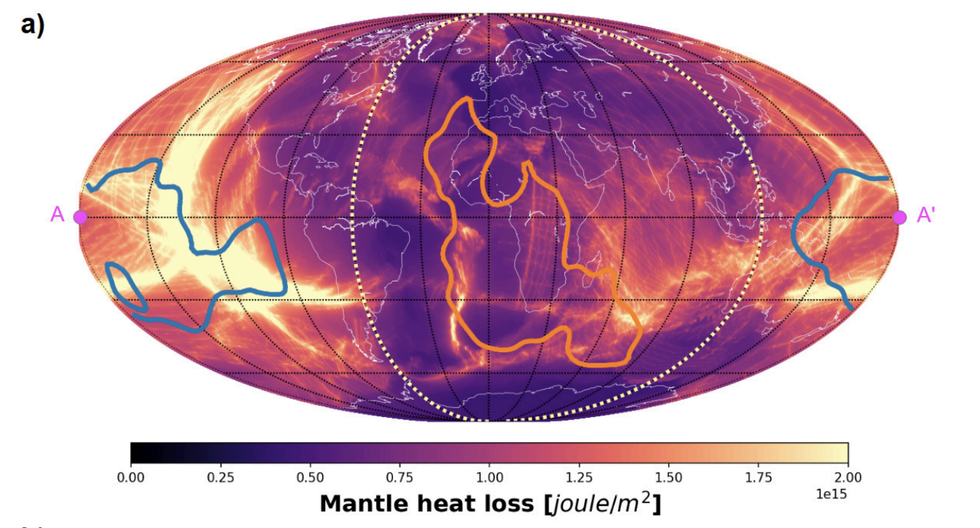The Pacific hemisphere’s seafloor cooling rate is driven by Earth’s largest ocean and tectonics.
Key Takeaways
- Earth’s Pacific hemisphere is cooling significantly faster than its African hemisphere.
- The rapid cooling is tied to thinner seafloor and vast Pacific Ocean heat dissipation.
- Continental mass insulates heat, with land-heavy regions acting as a “Thermos layer.”
- The Pacific hemisphere has cooled about 50 Kelvin more over 400 million years.
- High tectonic activity and thinner plates point to stark heat loss differences.
____________
A recent study led by researchers at the University of Oslo has uncovered a surprising disparity in how Earth’s interior loses heat. Published in Geophysical Research Letters, the research reveals that the planet’s Pacific hemisphere is cooling far faster than its African counterpart, a trend traced back to the era of the supercontinent Pangaea, 400 million years ago.
Earth’s interior is a molten powerhouse that drives its magnetic field and retains the heat that sustains tectonic activity. While this heat loss is a natural part of planetary evolution, eventually leading to a cooler, Mars-like state, the newly revealed hemispherical imbalance is unprecedented. The team’s findings suggest that the Pacific’s thin seafloor and massive oceanic volume have created conditions for accelerated cooling compared to the land-insulated African hemisphere.
The Role of Seafloor and Continental Drift
The uneven heat dissipation is largely driven by Earth’s seafloor dynamics. The Pacific Ocean, the largest on the planet, has a vast and relatively thin seafloor, allowing heat from the mantle to escape more efficiently into the cold ocean waters. In contrast, regions dominated by landmasses, such as Africa, Europe, and Asia, act as insulators. These land-heavy areas trap heat beneath thick continental plates, resembling a Thermos layer that slows the cooling process.
The researchers utilized advanced computer models to map 400 million years of Earth’s geological history, nearly doubling the timeframe of previous studies. Their models divided Earth into African and Pacific hemispheres, analyzing seafloor age and continental distribution. The Pacific hemisphere was found to have cooled approximately 50 Kelvin more than the African hemisphere over this period, correlating with consistently higher tectonic activity.

One surprising result was evidence that the Pacific hemisphere might have been much hotter at a certain point in the distant past. This raises questions about whether it was once covered by landmasses that trapped heat, a stark contrast to its current state dominated by seafloor cooling.
Implications for Earth’s Future
The findings have significant implications for understanding Earth’s long-term thermal evolution. Heat loss through the oceanic lithosphere is a critical driver of tectonic activity, and the Pacific’s “quenched” mantle highlights the interplay between geology and planetary cooling. High plate velocities and tectonic activity in the Pacific are both a consequence and a driver of this imbalance, as a hotter, meltier mantle facilitates the movement of tectonic plates.
Ultimately, this research underscores the dynamic relationship between Earth’s interior and its surface. While the heat loss imbalance may not directly impact humanity, it provides a fascinating glimpse into the planet’s thermal history and its future trajectory.



